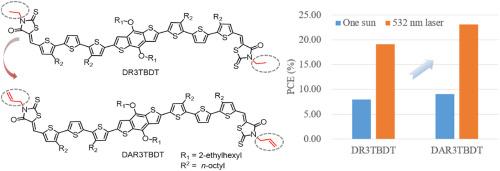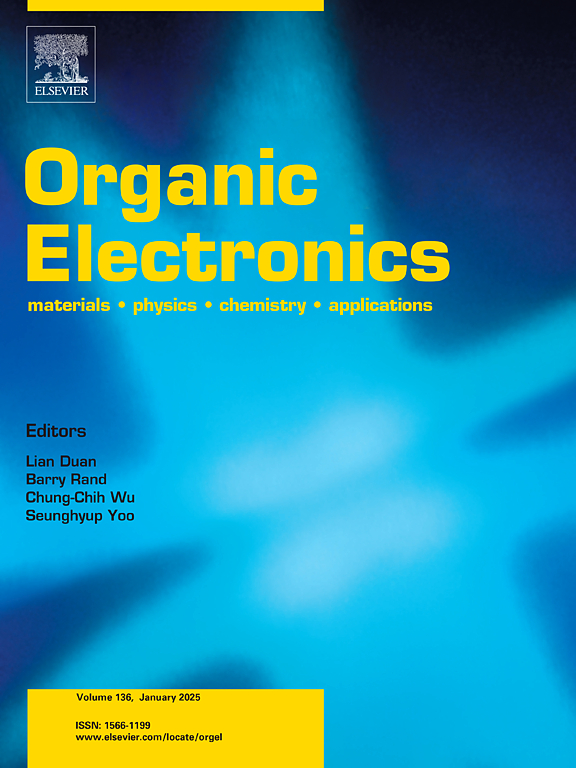通过微调末端单元侧链,提高了基于小分子的有机光伏电池的性能
IF 2.6
4区 工程技术
Q3 MATERIALS SCIENCE, MULTIDISCIPLINARY
引用次数: 0
摘要
通过分子工程获得合适的薄膜形态和微观结构仍然是小分子有机光伏电池长期面临的挑战。本文设计并合成了以烯丙基取代罗丹宁为末端单元的小分子给体DAR3TBDT。与末端有乙基基团的DR3TBDT分子相比,膜中的DAR3TBDT具有相似的光学带隙和前沿分子轨道能级,但分子排列更加有序。此外,与DR3TBDT:PC71BM相比,DAR3TBDT:PC71BM共混膜具有更好的形貌和更明确的相分离。由于有效的激子解离、电荷传输和电荷收集,基于DAR3TBDT:PC71BM的光伏器件在一个太阳(AM 1.5G, 100 mW cm−2)下的功率转换效率(PCE)为9.05%,优于基于DR3TBDT:PC71BM的同类器件(7.94%)。将基于DAR3TBDT: pc71bm的器件作为532 nm激光照射下的激光功率变换器,实现了23.11%的高PCE。本研究为从侧链工程的角度开发高性能光伏材料开辟了一条有希望的途径。本文章由计算机程序翻译,如有差异,请以英文原文为准。

Improved performance of small molecule based organic photovoltaic cells enabled by fine-tuning side chains on terminal units
Achieving proper film morphology and microstructures via molecular engineering remains a long-standing challenge for small-molecule-based organic photovoltaics. Herein, we designed and synthesized a small molecule donor, namely DAR3TBDT with allyl substituted rhodanine as terminal units. Compared to molecule DR3TBDT with ethyl groups on the terminus, DAR3TBDT in film showed similar optical bandgap and frontier molecular orbital energy levels, but more ordered molecular packing. Moreover, DAR3TBDT:PC71BM blend film exhibited better morphology with more defined phase separation in comparison to DR3TBDT:PC71BM counterpart. Owing to efficient exciton dissociation, charge transport and charge collection, the photovoltaic devices based on DAR3TBDT:PC71BM achieved a power conversion efficiency (PCE) of 9.05 % under one sun (AM 1.5G, 100 mW cm−2), outperforming the DR3TBDT:PC71BM-based counterparts (7.94 %). Furthermore, the DAR3TBDT:PC71BM-based devices are applied as the laser power converter under 532 nm laser irradiation, and achieved a high PCE of 23.11 %. This study opens a promising avenue to develop high-performance photovoltaic materials from the view of side chain engineering.
求助全文
通过发布文献求助,成功后即可免费获取论文全文。
去求助
来源期刊

Organic Electronics
工程技术-材料科学:综合
CiteScore
6.60
自引率
6.20%
发文量
238
审稿时长
44 days
期刊介绍:
Organic Electronics is a journal whose primary interdisciplinary focus is on materials and phenomena related to organic devices such as light emitting diodes, thin film transistors, photovoltaic cells, sensors, memories, etc.
Papers suitable for publication in this journal cover such topics as photoconductive and electronic properties of organic materials, thin film structures and characterization in the context of organic devices, charge and exciton transport, organic electronic and optoelectronic devices.
 求助内容:
求助内容: 应助结果提醒方式:
应助结果提醒方式:


